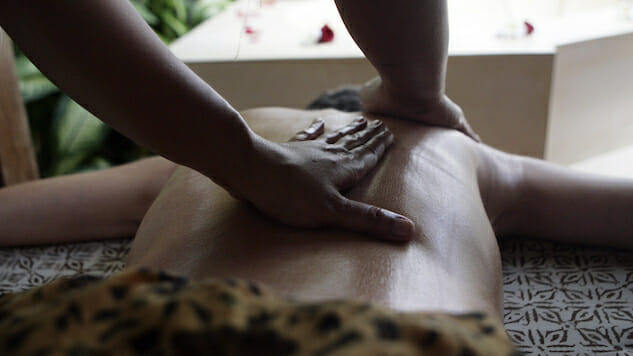What Doctors Say About Back Pain and How to Treat it With Exercise
Photo by Dimas Ardian/Getty
This article is not meant to diagnose or provide medical advice—that responsibility lies with physicians. The author is not a licensed medical professional.
Are you sitting down? You probably are because people today spend significantly more time seated compared to previous generations. An average American today sits around 13 hours per day, perhaps more. And, according to the National Institute of Arthritis and Musculoskeletal and Skin Diseases (NIAMS), back pain is one of our society’s most common medical problems.
Lots of people experience back injury—to varying degrees—but there are definitely ways to reduce your risk. Especially for those in today’s work culture. Laura E. Pempkowski, PT, DPT in Cambridge, Massachusetts, works with an overwhelming number of biotech and computer science professionals. “The sedentary postures that accompany many of these jobs is a main contributor to injury and prevents back health and wellness,” says Pempkowski. “Unfortunately, the evolution of our culture in science and computer technology is too fast for the evolution of human beings.”
“We know that the pressure in the discs between the discs and spine vertebrae is greatest when you are sitting,” says Nicholas Goyeneche, M.D., who specializes in orthopedics and sports medicine. “This means the pressure is hefty compared to say, standing or laying down.”
But, great news! There are all kinds of ways to counteract the man-made evils of our time.
David McCormick, M.D., MPH, PGY-2 outlines it simply: maintain a healthy weight and exercise consistently. “Regular exercise helps strengthen muscles—which support your back—and when you use muscles, they always ‘pull’ on the bones that they are attached to.” This pulling effect helps to strengthen bones.
Studies reported by NIAMS show that low-impact aerobic exercise is good for the disks that cushion the vertebrae and the individual spinal bones. Here are a few:
Barre Class
These classes combine floor work with small, isometric movements using the ballet barre and the participant’s body weight. The focus here is on the core, seat, arms and thighs. Nationwide popular franchises include Pure Barre, Barre Method and Barre3.
It is important to squeeze your seat. “Societies and cultures—both ancient and modern—that incorporate squatting force people to utilize their glutes in the way that they were designed: to extend the hip from a flexed starting position,” explains Pempkowski. Glute muscles provide a sturdy base and core for the body to function. “Sadly, when people use their lumbar back para-spinal/extensor muscles to stand erect they are overworking these string muscles,” she says.
However, if you’re prone to lower back pain, barre might not be right for you. Maintaining a neutral spine is key to protecting your lower back when doing workouts like barre and pilates. Tell your instructor you’re concerned about your back and ask for extra attention in maintaining a neutral pelvis (AKA barre tuck).
Yoga
-

-

-

-

-

-

-

-

-

-

-

-

-

-

-

-

-

-

-

-

-

-

-

-

-

-

-

-

-

-

-

-

-

-

-

-

-

-

-

-









































